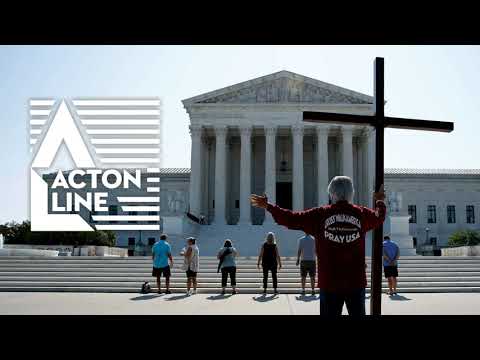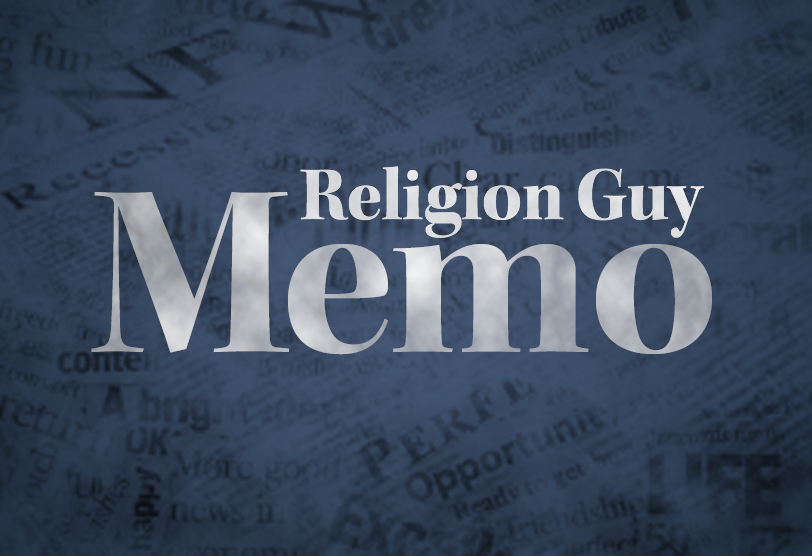
Since the July 9 Guy Memo about how to cover future conflicts between religious and LGBTQ rights there have been significant further comments that reporters will want to keep in mind.
In addition, Justice Ruth Bader Ginsburg’s cancer recurrence at age 87 underscores for the media that the president and Senate elected in November will choose any future Supreme Court and other judicial appointees who will act on such cases. Pundits think this factor helped victories in 2016 by Republican Senators and President Donald Trump.
The tensions here are evident with Secretary of State Michael Pompeo’s Commission on Unalienable Rights, which issued its first report July 16 (tmatt post on that topic here). Liberals decried this panel’s formation due to the members’ supposed ideological tilt. The panel is chaired by a devout Catholic, Harvard Law School’s Mary Ann Glendon (the daughter of a newspaper reporter).

The New York Times reported that Pompeo’s speech presenting this report was “divisive” because he emphasized that the commission believes “property rights and religious liberty” are “foremost” in consideration. (The report also defies current protests by lauding Founding Fathers even while admitting they owned slaves.)
Writers will want to analyze this lengthy text (.pdf here) for themselves. It does seem to The Guy that the commission’s focus on the Bill of Rights guarantee of “free exercise” of religion, ratified 228 years ago, suggests this might — as a global statement — outweigh recent LGBTQ rights that the Supreme Court has vindicated alongside its defense of religious liberty claims in other cases.
Reactions worth pondering have come from, among others, evangelical lawyer David French, who writes for thedispatch.com and, in this case, Time magazine, University of Virginia Law Professor Douglas Laycock in a National Review interview and Ryan T. Anderson of the Heritage Foundation, a leading critic of the transgender cause as in his book “When Harry Became Sally.”
French, who has done yeoman work on rights claims by religious groups, is surprisingly optimistic. In the past Supreme Court term he finds a clear trend favoring reasonable compromise, centered on Chief Justice John Roberts, a Republican appointee, and Justice Elena Kagan, who was DOJ”s solicitor general under President Barack Obama. He sees the court honoring LGBTQ protections in the secular spheres of society while prohibiting “targeted discrimination against people of faith” and extending liberty for religious organizations. Win. Win. And strikingly similar to much-discussed Utah Compromise legislation. (French laments that the national legislatures have left this settlement to judges.)
Laycock, a premier church-state theorist, offers informed hunches on future federal court disputes. He thinks religious schools’ absolute hiring rights for elementary grades may not be extended to middle and high schools where teachers rarely or never present religious material. He does figure adherence to a religious institution’s doctrines should and will be allowed in its hiring decisions.
While the Bob Jones University case stripped tax exemption over racial tenets that violated societal values, he notes this precedent has not been applied to other issues the past 37 years. On the other hand, the new SCOTUS new recognition for gay and transgender rights against employment discrimination could circumscribe, for instance, evangelical business owners.
Anderson sees major implications not just for religious organizations but families and society in general. He argues that the U.S. must now make clear that it is legal “to act on the convictions that we are created male and female, and that male and female are created for each other.”
Instead of that, he asserts, the Supreme Court has now imposed “progressive gender ideology into our nation’s civil rights laws,” with sexual orientation and gender identity now equally race. He predicts that “there will likely be costly litigation” for religious groups to achieve protection for their beliefs on these matters, and this right will not extend to non-religious groups and individuals.
The results, he asserts, could include unwanted “indoctrination” of students “trapped in our public school system,” biologically male athletes unfairly competing against girls and women, potentially dangerous lack of privacy in locker rooms and showers and women’s shelters and youths given ill-advised sex-change treatments by doctors.
Delicate and difficult disputes are ahead, no matter what.










